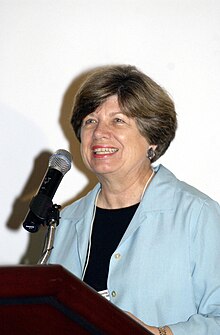
The John F. Kennedy Space Center, located on Merritt Island, Florida, is one of the National Aeronautics and Space Administration's (NASA) ten field centers. Since December 1968, KSC has been NASA's primary launch center of human spaceflight, research, and technology. Launch operations for the Apollo, Skylab and Space Shuttle programs were carried out from Kennedy Space Center Launch Complex 39 and managed by KSC. Located on the east coast of Florida, KSC is adjacent to Cape Canaveral Space Force Station (CCSFS). The management of the two entities work very closely together, share resources and operate facilities on each other's property.

Cape Canaveral Space Force Station (CCSFS) is an installation of the United States Space Force's Space Launch Delta 45, located on Cape Canaveral in Brevard County, Florida.

The Space Coast is a region in the U.S. state of Florida around the Kennedy Space Center (KSC) and Cape Canaveral Space Force Station. It is one of several "themed" coasts around Florida. All orbital launches from American soil carrying NASA astronauts have departed from either KSC or Cape Canaveral. The Space Force Station has also launched unmanned military and civilian rockets. Cities in the area include Port St. John, Titusville, Cocoa, Rockledge, Cape Canaveral, Merritt Island (unincorporated), Cocoa Beach, Melbourne, Satellite Beach, Indian Harbour Beach, Indialantic, Melbourne Beach, Palm Bay, and Viera (unincorporated). Most of the area lies within Brevard County. It is bounded on the south by the Treasure Coast, on the west and north by Central Florida, and on the east by the Atlantic Ocean.

Nancy Jan Davis is a former American astronaut. A veteran of three space flights, Davis logged over 673 hours in space. She is now retired from NASA.

Andrew Michael "Andy" Allen is a retired American astronaut. A former Marine aviator and lieutenant colonel, he worked as a test pilot before joining NASA in 1987. He flew three Space Shuttle missions before retiring in 1997.

Pierre Joseph Thuot is a retired United States Navy captain and NASA astronaut. He went into space three times, spending over 650 hours in space, including over 15 hours in three space walks. He is a former U.S. record holder for time spent on one spacewalk, and participated in the first three-person spacewalk.

Launch Complex 39 (LC-39) is a rocket launch site at the John F. Kennedy Space Center on Merritt Island in Florida, United States. The site and its collection of facilities were originally built as the Apollo program's "Moonport" and later modified for the Space Shuttle program.
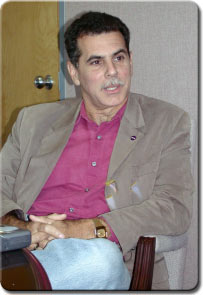
Miguel Rodríguez is the Chief of the Integration Office of the Cape Canaveral Spaceport Management Office.

The Kennedy Space Center Visitor Complex is the visitor center at NASA's Kennedy Space Center on Merritt Island, Florida. It features exhibits and displays, historic spacecraft and memorabilia, shows, two IMAX theaters, and a range of bus tours of the spaceport. The "Space Shuttle Atlantis" exhibit contains the Atlantis orbiter and the Shuttle Launch Experience, a simulated ride into space. The center also provides astronaut training experiences, including a multi-axial chair and Mars Base simulator. The visitor complex also has daily presentations from a veteran NASA astronaut. A bus tour, included with admission, encompasses the separate Apollo/Saturn V Center. There were 1.7 million visitors to the visitor complex in 2016.
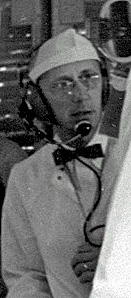
Günter F. Wendt was a German-born American mechanical engineer noted for his work in the U.S. human spaceflight program. An employee of McDonnell Aircraft and later North American Aviation, he was in charge of the spacecraft close-out crews at the launch pads for the entire Mercury and Gemini programs (1961–1966) and the crewed phases of the Apollo, Skylab, and Apollo–Soyuz programs (1968–1975) at the Kennedy Space Center (KSC). His official title was Pad Leader.

Launch Complex 34 (LC-34) is a deactivated launch site on Cape Canaveral Space Force Station, Florida. LC-34 and its companion LC-37 to the north were used by NASA from 1961 through 1968 to launch Saturn I and IB rockets as part of the Apollo program. It was the site of the Apollo 1 fire, which claimed the lives of astronauts Gus Grissom, Ed White, and Roger Chaffee on January 27, 1967. The first crewed Apollo launch — Apollo 7 on October 11, 1968 — was the last time LC-34 was used.

NASA Parkway, also known as NASA Causeway, is an east–west expressway in Brevard County, Florida, containing two causeways. The first causeway connects the Florida mainland to Merritt Island and later, over the private second causeway, connects Merritt Island to Cape Canaveral. As such, the NASA Parkway is the main route connecting points of interest in Titusville, Florida to the Kennedy Space Center on Merritt Island.
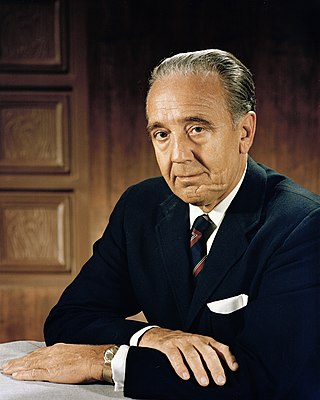
Kurt Heinrich Debus was a German-American rocket engineer and NASA director. Born in Germany, he was a member of the Schutzstaffel (SS) during World War II, where he served as a V-weapons flight test director. Following the war, he was brought to the United States via Operation Paperclip, and directed the design, development, construction and operation of NASA's Saturn launch facilities. He became the first director of NASA's Launch Operations Center, and, under him, NASA conducted 150 launches of military missiles and space vehicles, including 13 launches of the Saturn V rocket as part of the Apollo Moon landing program.

NASA's Christopher C. Kraft Jr. Mission Control Center, also known by its radio callsign, Houston, is the facility at the Lyndon B. Johnson Space Center in Houston, Texas, that manages flight control for the United States human space program, currently involving astronauts aboard the International Space Station (ISS). The center is in Building 30 at the Johnson Space Center and is named after Christopher C. Kraft Jr., a NASA engineer and manager who was instrumental in establishing the agency's Mission Control operation, and was the first Flight Director.
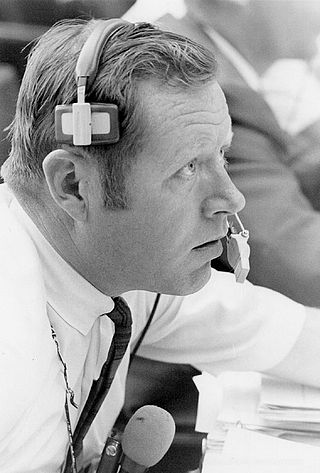
John William "Jack" King was Chief of Public Information and a Public Affairs Officer for NASA. He is best known for his work as Kennedy Space Center Chief of Public Information during projects Mercury, Gemini and Apollo. As part of this role, he provided public announcements and commentary for several of the mission launches. He is best known for his announcement of the Apollo 11 launch, which earned him the nickname "Voice of Apollo". The well-known commentary from that launch has been reused in songs and advertisements, and was included in a 2011 collection of NASA sounds from historic spaceflights that can be used as ringtones.

Paul Charles Donnelly was an American guided missile pioneer and a senior NASA manager during the Apollo Moon landing program at the Kennedy Space Center (KSC). Responsible for the checkout of all Apollo launch vehicles and spacecraft, he was also involved in every U.S. manned launch from Alan Shepard's Mercury suborbital flight in 1961 through the tenth Space Shuttle mission (STS-41B) in 1984.
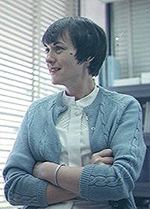
Dolores B. "Dee" O'Hara was the first aerospace nurse to NASA's first astronauts, laying the foundation to the field of Space nursing. O'Hara was the official nurse to the Mercury Seven astronauts and their families, continuing to support the Gemini Program, Apollo astronauts and Skylab.
Judith A. Kersey is an American engineer. She was the first woman guidance systems engineer at NASA Kennedy Space Center.

Charlie Blackwell-Thompson is an American engineer. Blackwell-Thompson is the launch director for NASA's Exploration Ground Systems Program, based at NASA's John F. Kennedy Space Center (KSC). She oversaw the countdown and liftoff of NASA's Space Launch System (SLS) rocket and Orion spacecraft during its first flight test, called Artemis 1.
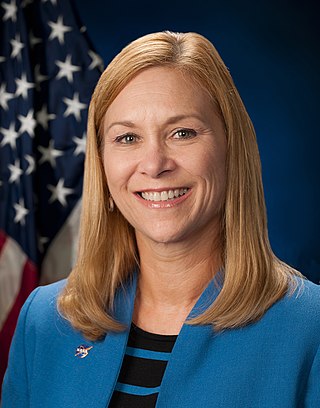
Janet E. Petro is an American engineer and civil servant currently serving as the 11th director of NASA's John F. Kennedy Space Center. She was appointed by NASA Administrator Bill Nelson on June 30, 2021, making her the first woman to serve as director. Petro previously served as deputy director at the John F. Kennedy Space Center.
